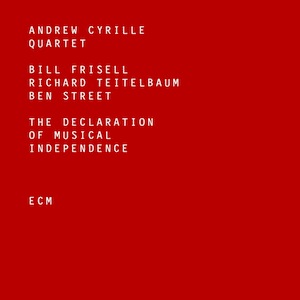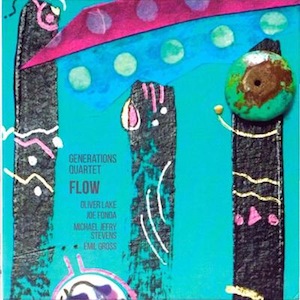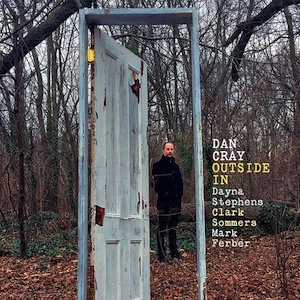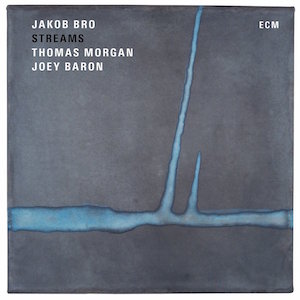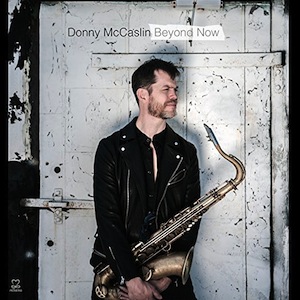Bill Frisell: guitar; Richard Teitelbaum: synthesizer, piano; Ben Street: double bass; Andrew Cyrille: drums.
As one of the most considered avant-garde jazz drummers, Andrew Cyrille, a 77-year-old living legend who played with Anthony Braxton, David Murray, Muhal Richard Abrams, Cecil Taylor, Marion Brown, Carla Bley, David S. Ware, among others, doesn’t disappoint in The Declaration of Musical Independence, his first album on ECM Records.
To be front and center in most of the tracks, the drummer called the guitarist Bill Frisell, who never stops to cause admiration with his rootless voicings sank in delayed/reverbed effects. The quartet is rounded out by the subdued-yet-influential keyboardist Richard Teitelbaum and the prominent bassist Ben Street, who already had recorded with Cyrille in a trio project of the Danish pianist Soren Kjoergaard.
The veteran’s snare rat-a-tat can be heard in the first minute of “Coltrane Time”, a ride for freedom whose dazzling intensity takes us to cosmic surfaces. While the bandleader sticks to his astute rhythm patterns, the tune seizes a mix of atmospheric and electrifying components due to Teitelbaum and Frisell’s approaches.
Frisell’s “Kaddish”, more contemplative and less amorphous, is so melodiously yearning that could make me cry. Its wistful, penetrating melody causes assorted sentiments to unclasp.
The celebrated world-class guitarist shows once more his compositional mastery and passionate literacy in “Song for Andrew No. 1”, a composition he likely wrote for Cyrille. This one is put up with beautiful, serene ambiances and contrasting polyrhythms.
Experimentalism integrates “Sanctuary”, an exquisitely percussive number composed by the collective, which brings up the intimacy, interplay, and control of the quartet.
Besides Frisell, with three tunes, also Teitelbaum and Street contributed with one composition each. The latter’s “Say…”, a languorous piece of glacial tones, is marked by a repetitive melodic suggestion implanted by Frisell on top of Teitelbaum’s sparse keyboard voicings. An adventurous Cyrille, impressive in the art of brushing, combines in perfection with Street’s suave harmonics.
The longest and perhaps the most abstract tune on the recording, got the title of “Dazzling (Perchordially Yours)”. It’s an anatomically diffuse, nearly dismembered experience of textural intermittence boosted by electric guitar bends.
The Declaration of Musical Independence is a spacey and highly hypnotic adventure. All the four insightful musicians put their own individual style in favor of the band’s sound. Their sense of time is volatile, their temperament falls in introspection, their chemistry is on-the-spot, and their moves, precise and compassionate.
As a consequence, we remain suspended in the air for a long, long time.
Grade A-
Favorite Tracks:
02 – Kaddish ► 04 – Say… ► 09 – Song for Andrew No. 1

